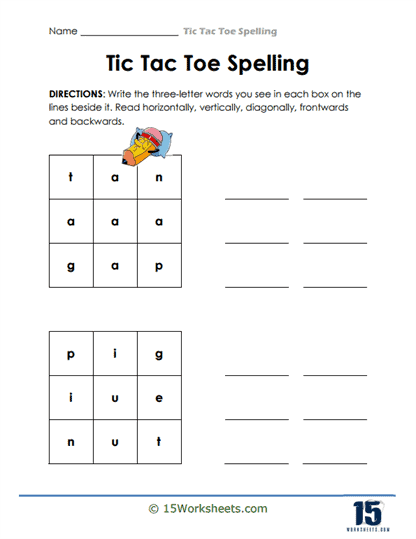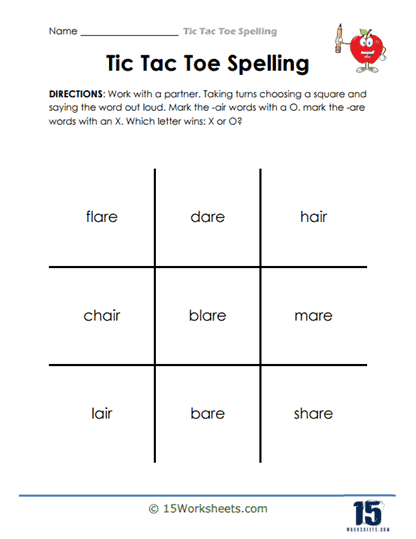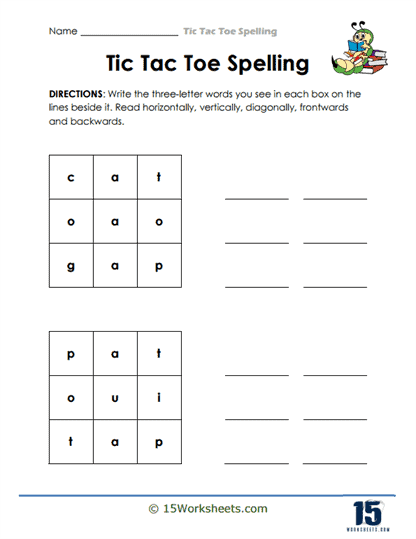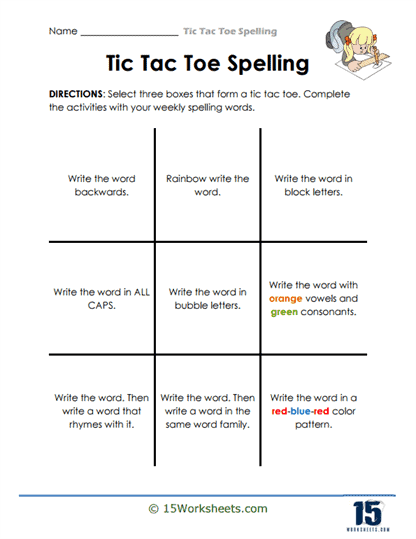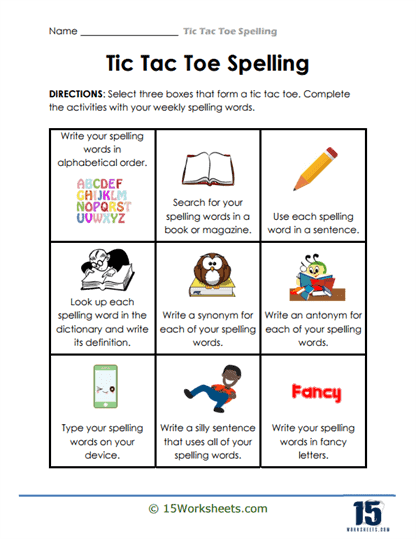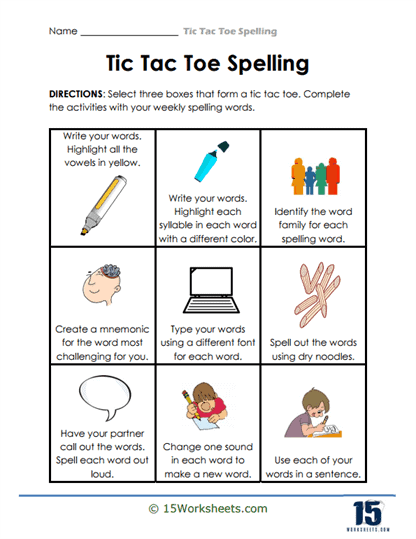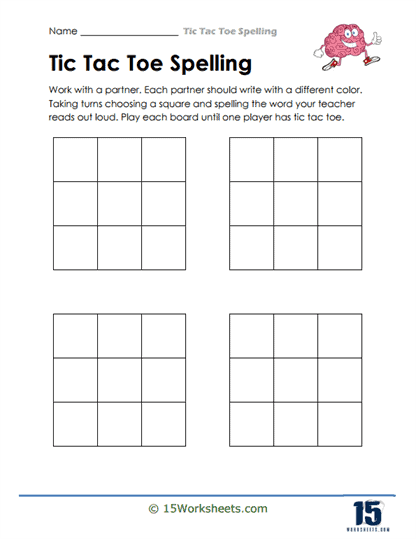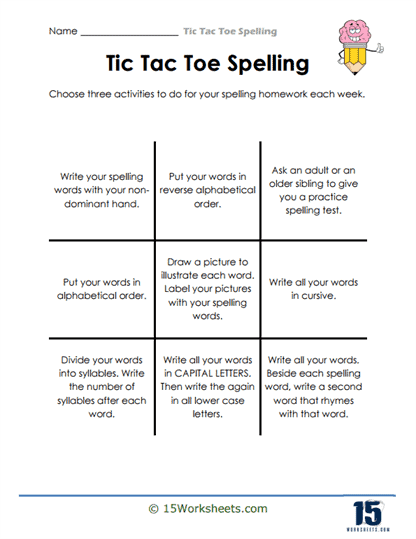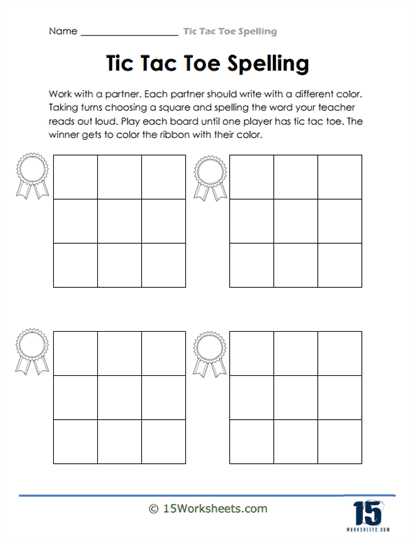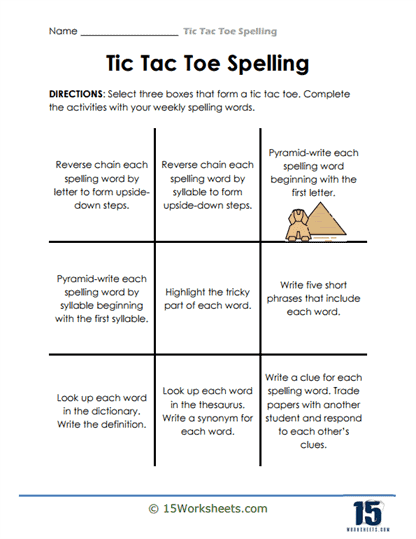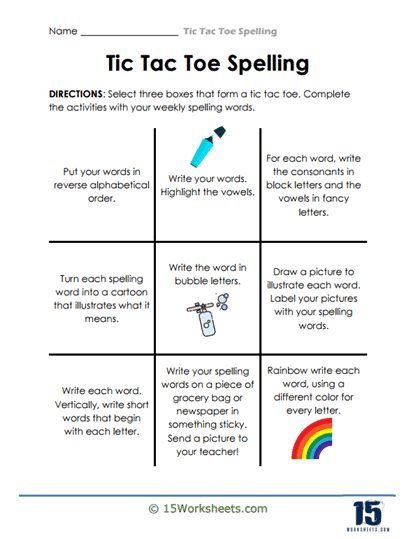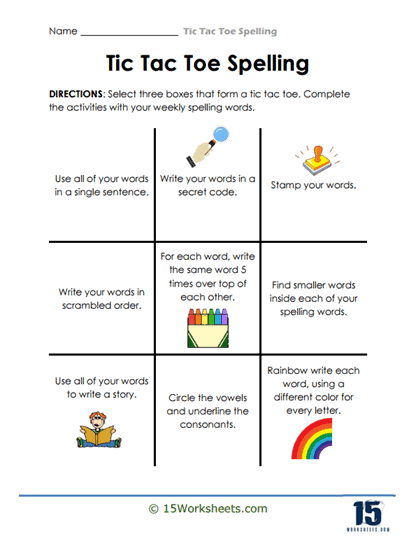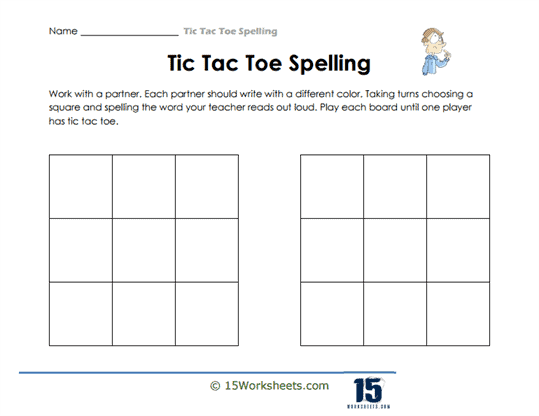Tic Tac Toe Spelling Worksheets
All About These 15 Worksheets
This is a collection of innovative and versatile sheets designed for teachers, parents, and homeschoolers who want to make spelling practice both engaging and effective. By combining the timeless fun of Tic Tac Toe with focused spelling activities, these worksheets capture students’ attention while building essential literacy skills. The structured yet playful approach encourages learners to develop their vocabulary, phonics, and word-recognition skills in ways that feel less like traditional homework and more like an enjoyable challenge. With a variety of activities that cater to diverse learning styles, these worksheets make spelling accessible to all students. Whether used in the classroom or at home, the collection ensures that spelling practice is a rewarding experience for both educators and students.
One of the standout features of this collection is its focus on interactive word formation. In these worksheets, students explore three-letter words in Tic Tac Toe grids, reading in all directions-horizontally, vertically, diagonally, forwards, and backwards. This exercise sharpens students’ critical thinking and improves their ability to recognize spelling patterns in real-time. By blending problem-solving with language skills, this type of activity keeps students engaged while reinforcing their understanding of phonics. Moreover, it offers a tactile and visual approach to learning, ensuring that even reluctant spellers find the activity appealing. The sense of accomplishment that comes from identifying hidden words motivates learners to tackle similar challenges with enthusiasm. These grids also serve as a foundation for more complex wordwork activities, allowing students to build their confidence incrementally.
Beyond word discovery, the collection includes creative spelling challenges that inspire students to think outside the box. Worksheets prompt learners to select three tasks in a Tic Tac Toe pattern, creating a unique path to spelling mastery. Activities might include highlighting vowels in bright colors, writing words in different artistic fonts, or crafting mnemonics for challenging spellings. For instance, a student might write the word “train” in bold blue letters while using a rhyme to remember the “ai” sound. These tasks not only reinforce the words being practiced but also stimulate creativity and imagination. By offering students choices, these worksheets cater to their individual interests and strengths, making spelling practice feel less prescriptive and more empowering. This level of personalization is particularly valuable in classrooms with diverse learners, as it allows teachers to adapt activities to meet varying needs.
Collaborative exercises are another feature that sets these worksheets apart. Students can partner up to play Tic Tac Toe, spelling words in each square after a teacher or parent reads them aloud. This interactive format fosters teamwork and helps students practice their spelling words in a low-pressure, game-like environment. Collaboration encourages peer learning, as students often pick up tips and strategies from their partners during these activities. It also helps build social skills, such as turn-taking and communication, which are critical in group settings. For homeschoolers, these partner-based activities offer an opportunity for siblings or friends to learn together in a fun and engaging way. By transforming a traditional game into an educational tool, these worksheets demonstrate how learning can happen through play.
A significant focus of these worksheets is on incorporating color and design to make learning visually stimulating. Activities like “rainbow writing,” where each letter of a word is written in a different color, turn spelling into an art project. Similarly, tasks that involve writing words in bubble letters, block letters, or alternating color patterns make spelling practice visually appealing and enjoyable. These creative exercises not only enhance engagement but also support fine motor skill development as students practice precise handwriting. Visual learners, in particular, benefit from these activities, as the use of color and shapes helps them internalize word structures and letter sequences. For kinesthetic learners, activities that incorporate physical objects, like spelling words with dry noodles or stamps, offer a hands-on approach that reinforces learning through touch and movement.
The variety in these worksheets ensures that all learners, regardless of their skill level or learning style, can find activities that suit them. Beginning spellers can focus on simpler exercises, such as identifying vowels and consonants, while more advanced students can challenge themselves with tasks like writing words in reverse alphabetical order or creating sentences that use multiple spelling words. For example, a student might be tasked with finding rhyming words for “cat” or forming new words by changing a single letter, like turning “hat” into “hot.” This differentiation makes the collection a valuable resource for teachers looking to implement tiered instruction in their classrooms. It also ensures that students remain engaged as they progress in their spelling abilities, with activities that grow in complexity alongside their skills.
In addition to the examples provided, the collection includes supplementary worksheets that further enhance spelling practice. These might include crossword puzzles, word searches, and scrambled letter exercises that require students to rearrange letters to form their spelling words. Writing prompts encourage students to use their spelling words in creative sentences or short stories, helping them understand how these words function in context. Word ladders challenge students to change one letter at a time to form new words, while rhyming activities and word family exercises emphasize phonics and sound patterns. These supplementary worksheets expand the range of practice opportunities, ensuring that students can explore spelling in a variety of formats.
For teachers, the these worksheets are an invaluable time-saver. With ready-made activities that align with weekly spelling lists, educators can easily integrate these worksheets into their lesson plans. The variety of tasks also allows teachers to differentiate instruction, providing targeted support for students who need extra practice while challenging advanced learners with more complex exercises. For parents and homeschoolers, the worksheets offer a structured yet flexible way to support literacy development at home. The fun and creative nature of the activities ensures that children remain engaged, turning spelling practice into an enjoyable part of their daily routine.

